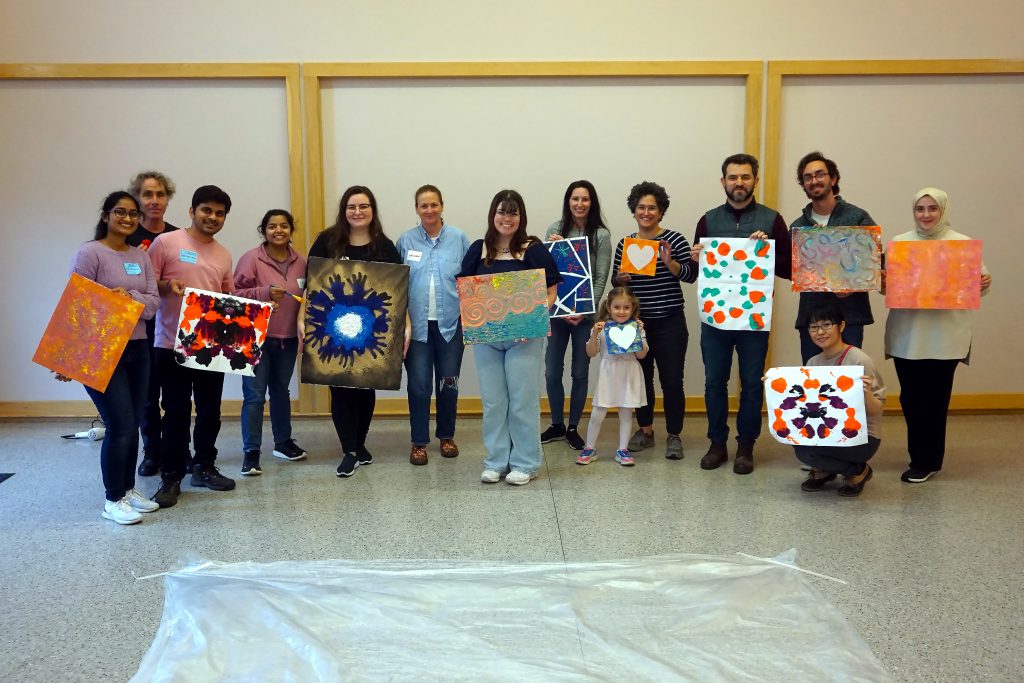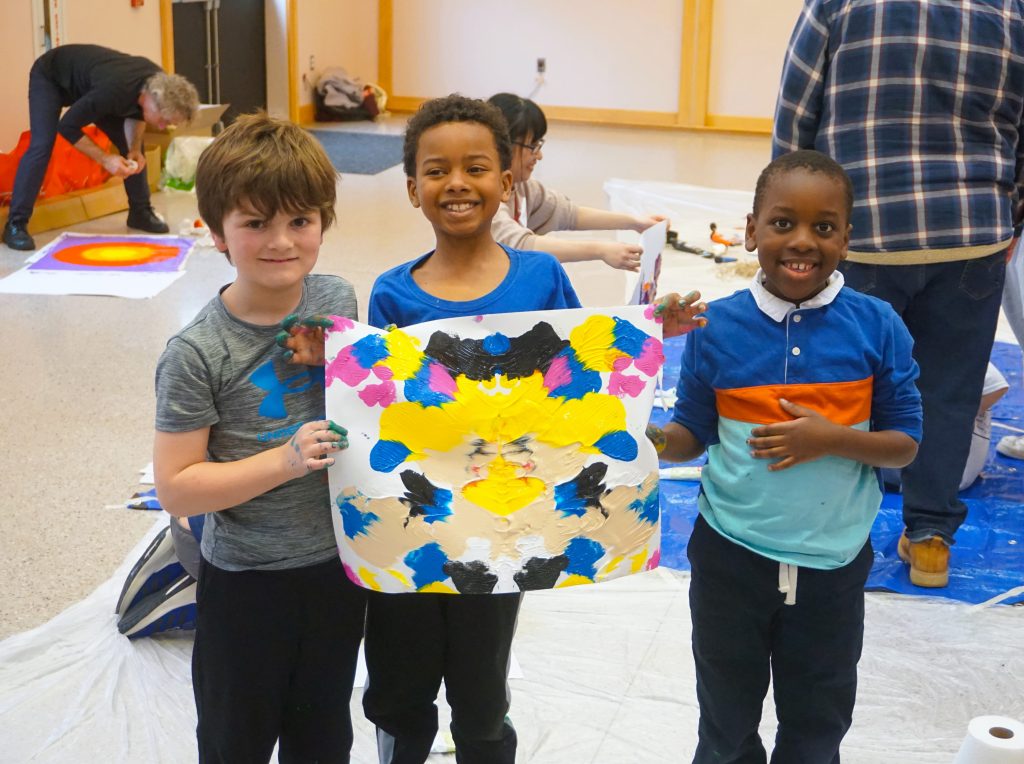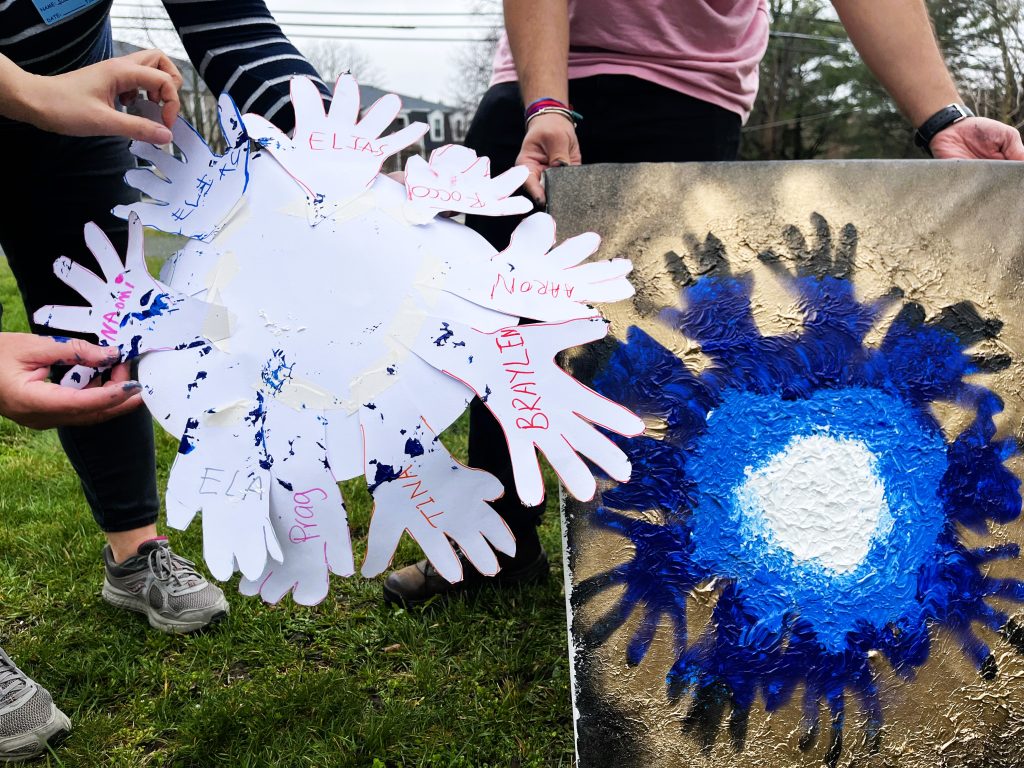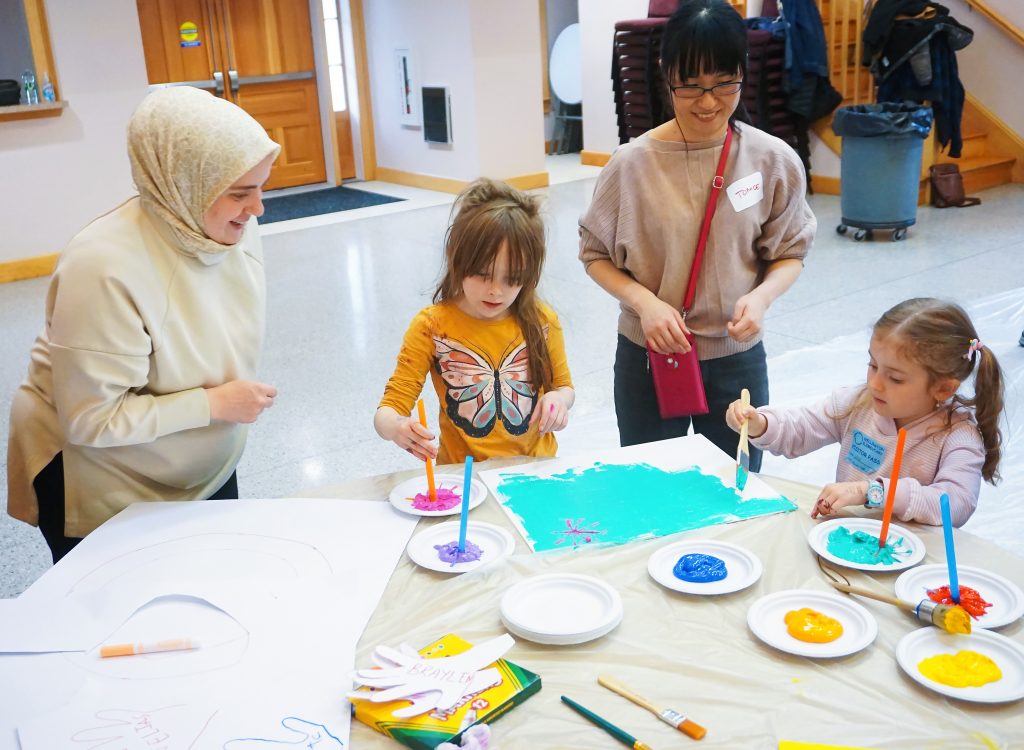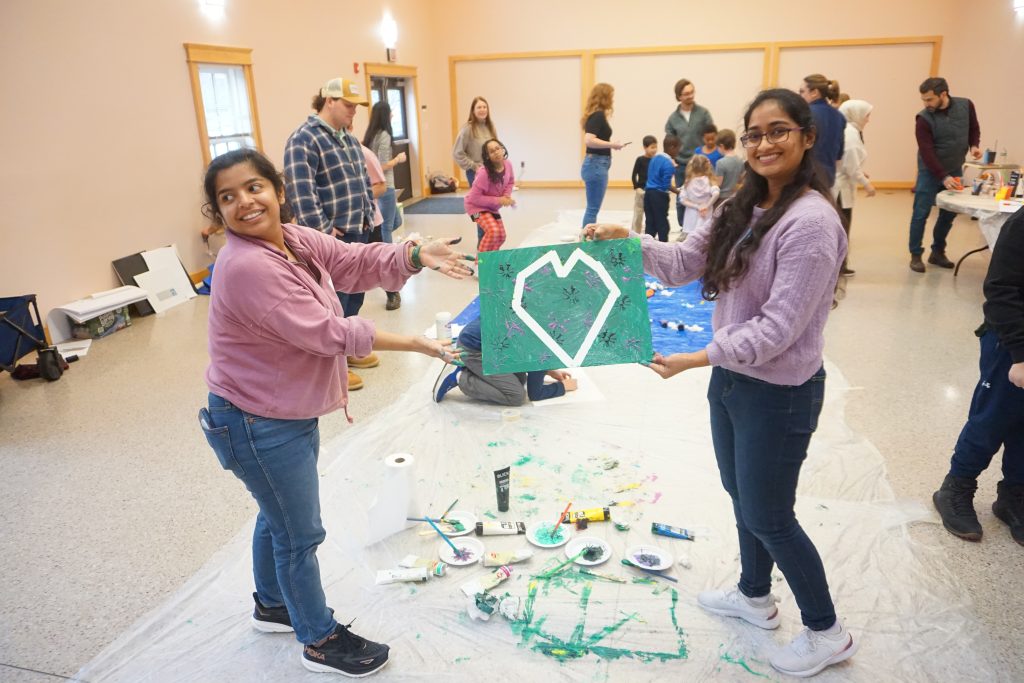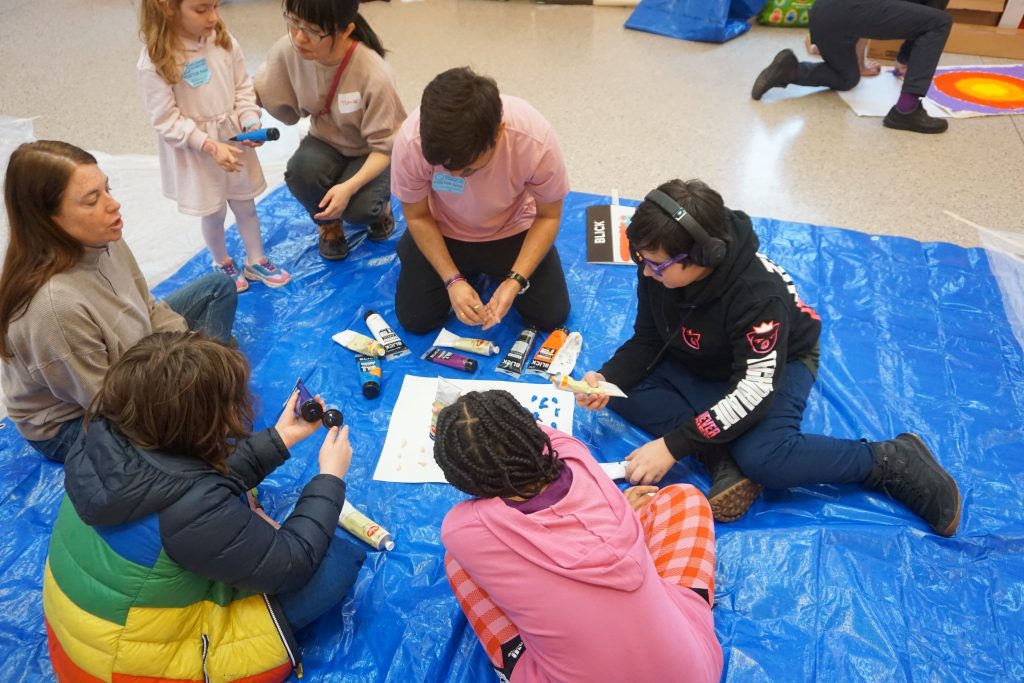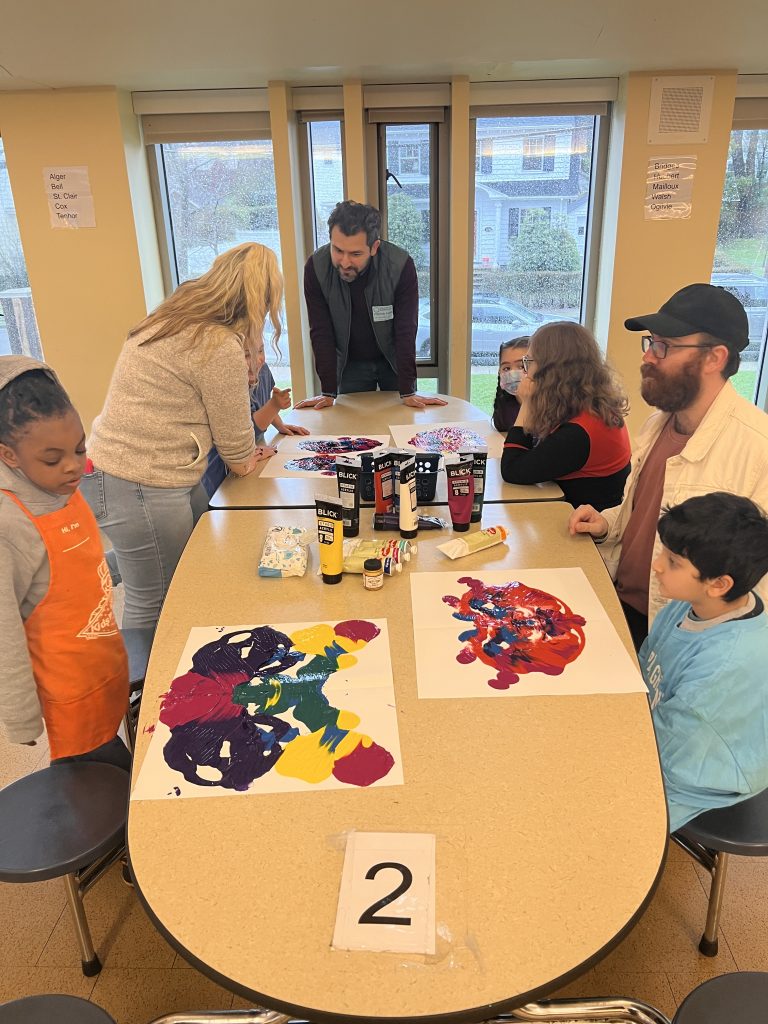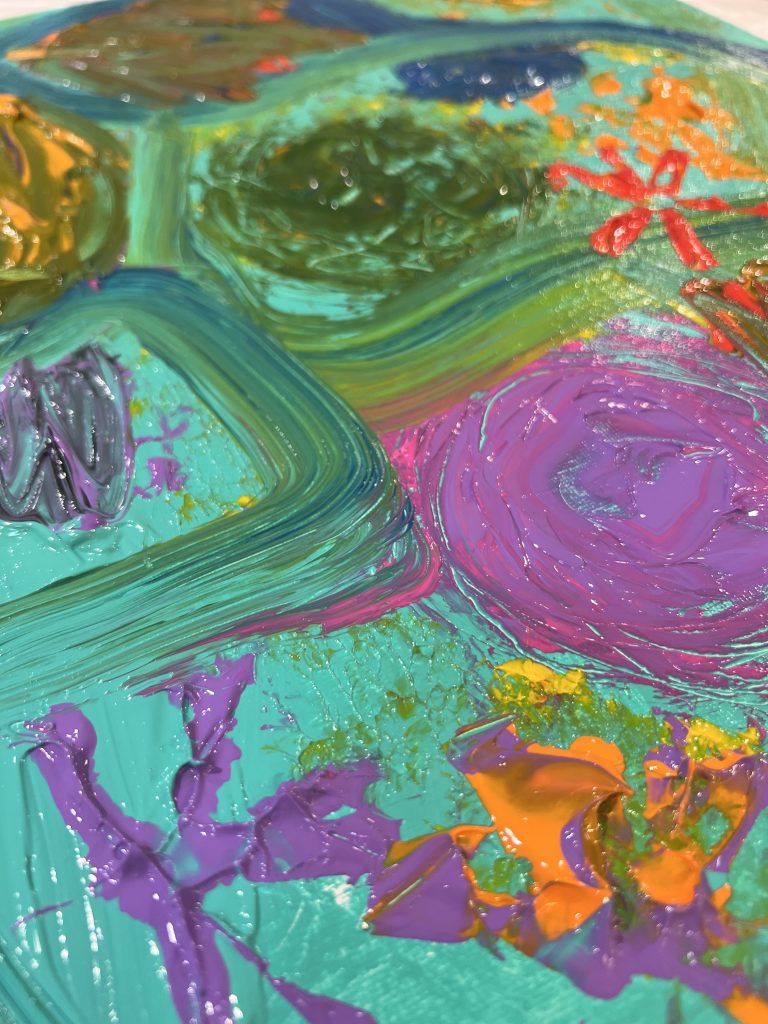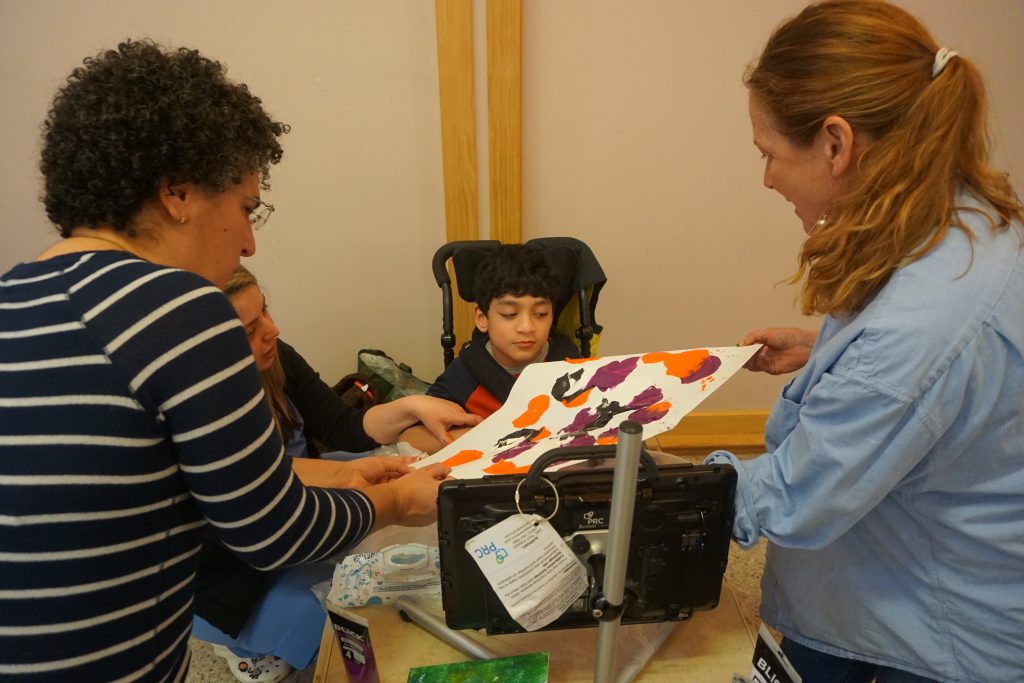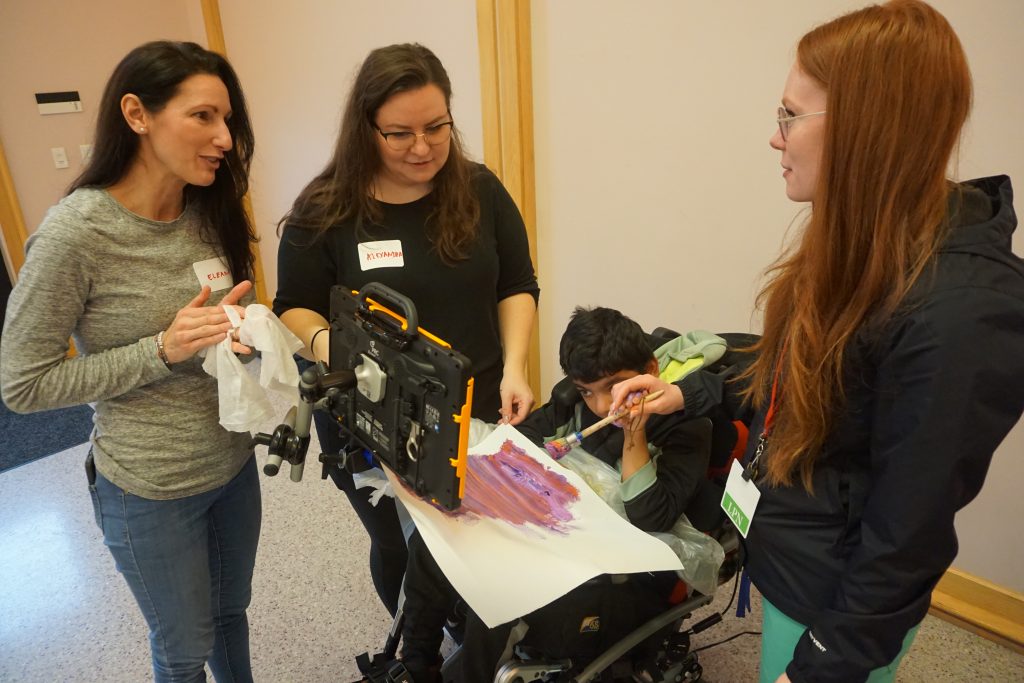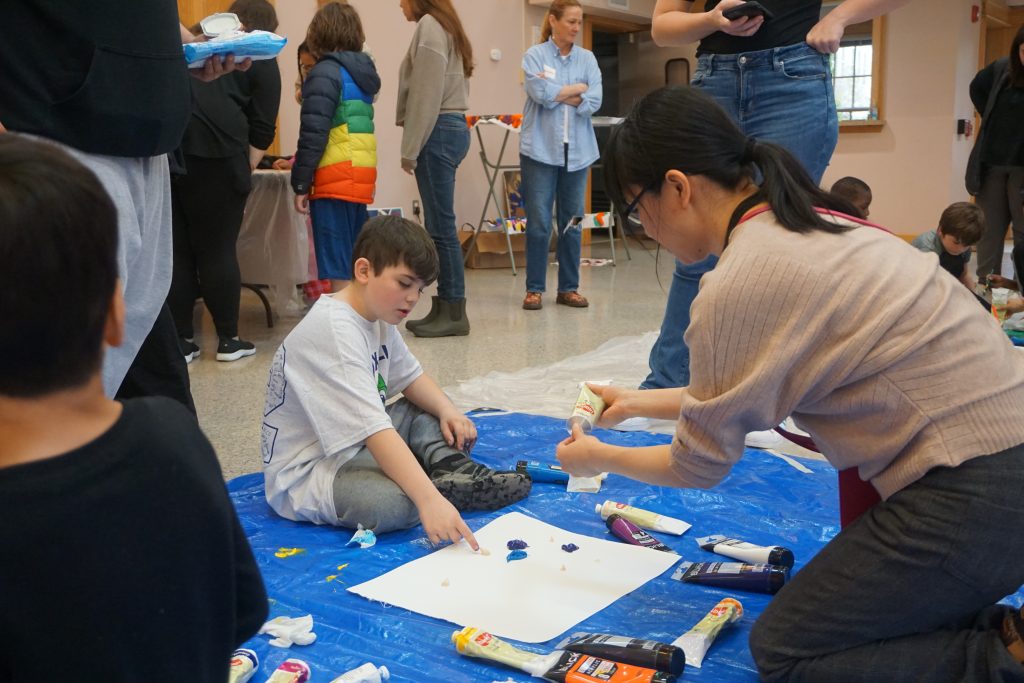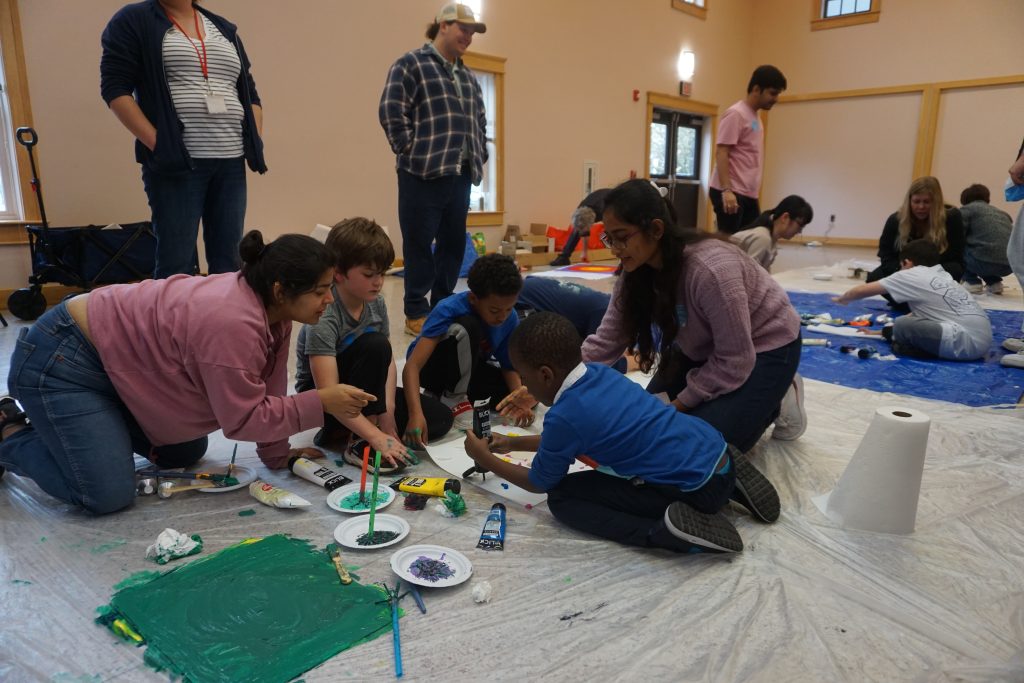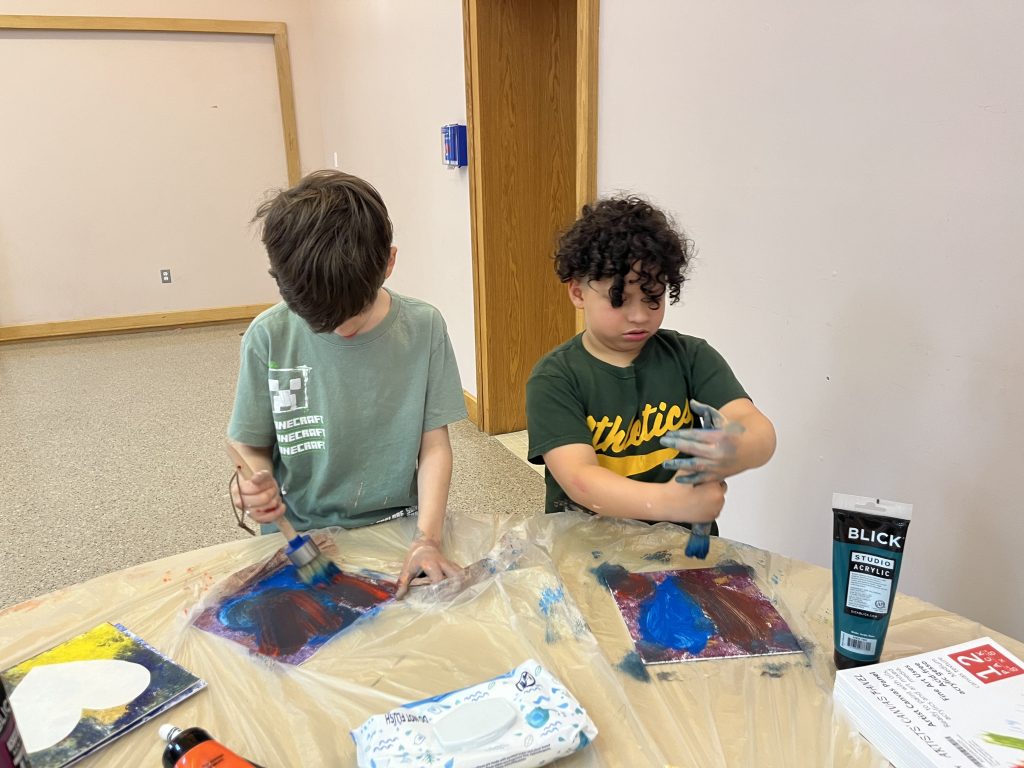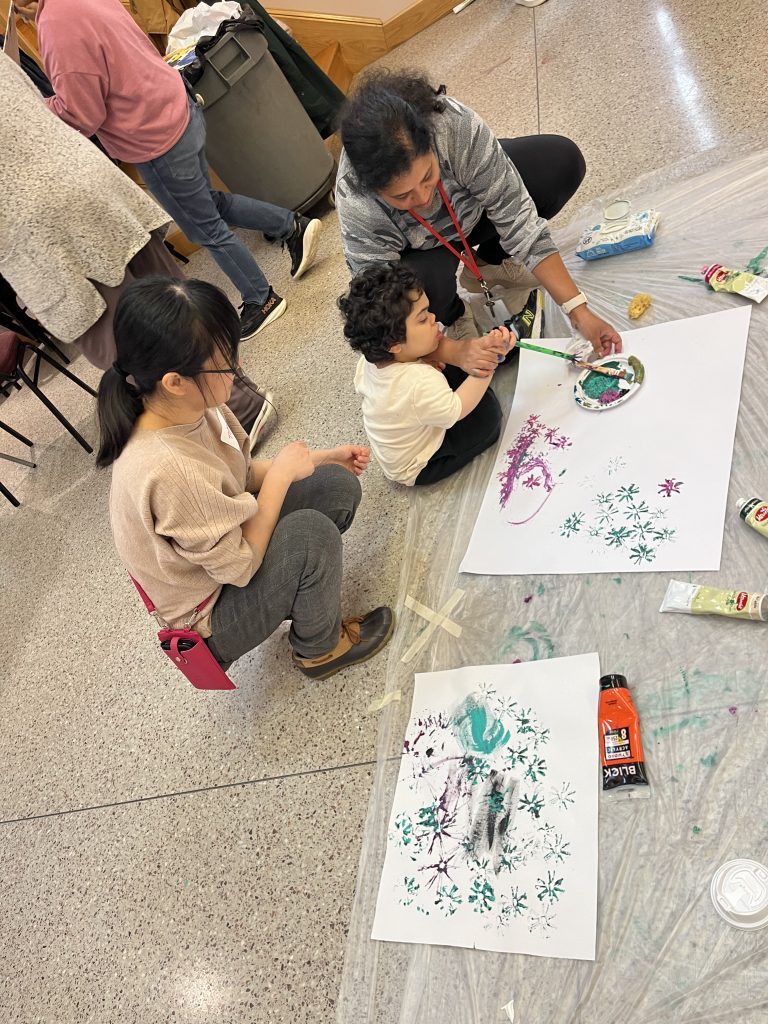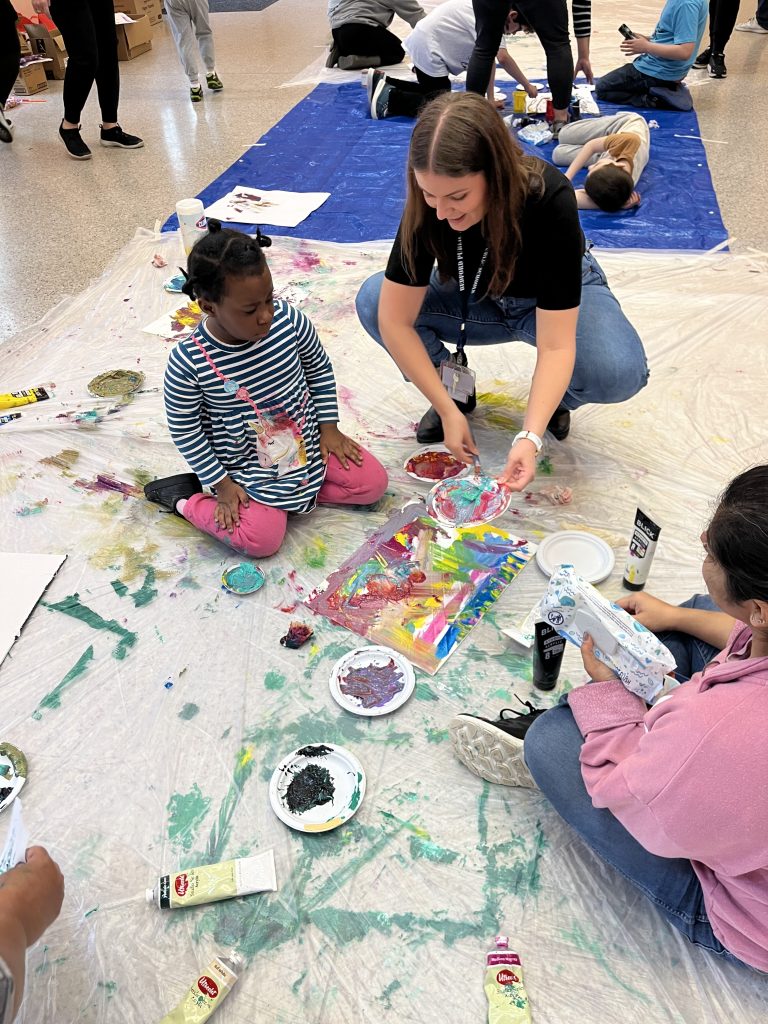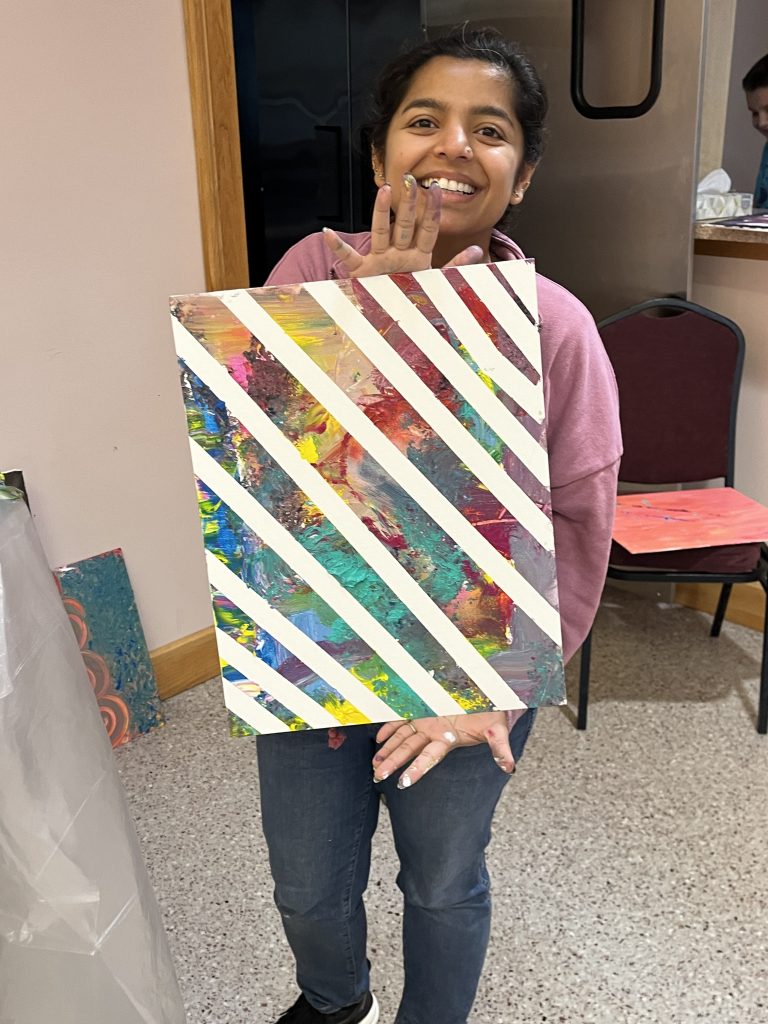Researchers and staff from MIT, including from the Simons Center for the Social Brain, collaborated with schoolchildren with special needs to create art, have fun and learn from each other.
An unmistakable takeaway from sessions of “UnrulyArt” is that all those “n’ts”—can’t, needn’t, shouldn’t, won’t—that can lead people to exclude children with disabilities or cognitive, social and behavioral impairments from creative activities aren’t really rules. They are merely assumptions and stigmas.
When a session ends and the paint that was once flying is now just drying, the rewards that emerge are more than the individual works the children and their volunteer helpers created. There is also the joy and the intellectual engagement that maybe was experienced differently but nevertheless could be shared equally between the children and the volunteers.
When MIT Professor Pawan Sinha first launched UnrulyArt in 2012 his motivation was to share the joy and fulfillment he personally found in art with children in India who had just gained their sense of sight through a program he founded called Project Prakash.
“I felt that this is an activity that may also be fun for children who have not had an opportunity to engage in art,” said Sinha, professor of vision and computational neuroscience in the Department of Brain and Cognitive Sciences (BCS). “Children with disabilities are especially deprived in this context. Societal attitudes towards art can keep it away from children who suffer from different kinds of cognitive, sensory, or motoric challenges.”
Margaret Kjelgaard, an assistant professor at Bridgewater State University and Sinha’s longtime colleague in autism research and in convening UnrulyArt sessions, said that the point of the art is the experience of creation, not demonstrations of skill.
“It’s not about fine art and being precise,” said Kjelgaard, whose autistic son had a blast participating in his own UnrulyArt session a decade ago and still enjoys art. “It’s about just creating beautiful things without constraint.”
UnrulyArt’s ability to edify both children with developmental disabilities and the scientists who study their conditions interleaves closely with the mission of the Simons Center for the Social Brain (SCSB), said director Mriganka Sur. That’s why SCSB sponsored and helped to staff four sessions of UnrulyArt April 12 in Belmont and Burlington, Mass.
“As an academic research center, SCSB activities focus mainly on science and scientists,” said Sur, Newton Professor in BCS and The Picower Institute for Learning and Memory at MIT. “Our team thought this would be a wonderful opportunity for us to do something outside the box.”
Getting unruly
In a small event hall in Burlington, SCSB postdoctoral fellows and administrators and members of Sinha’s lab laid down tarps and set up stations of materials for dozens of elementary school children from the LABBB Educational Collaborative, which provides special education services to schoolchildren from ages 3 through 22 from local communities. In all, UnrulyArt hosted approximately 60 children across four sessions on April 12, said program director Donna Goodell.
“It’s also a wonderful social opportunity as we bring different cohorts of students together to participate,” she noted.
With the room set up, kids came right in to get unruly with the facilitation of volunteers. Some children painted on sheets of paper at tables as any children would. Other children opted to skate around on globs of paint on a huge piece of paper on the floor. Many others, including some in wheelchairs who struggled to hold a brush, were aided by materials and techniques cleverly conceived to enable aesthetic results.
For instance, children of all abilities could drop dollops of paint on paper that when folded over created a symmetric design. Others freely slathered paints on boards that had been pre-masked with tape so that when the tape was removed, the final image took on the hidden structure. Yet others did the same with smaller boards where removal of a heart-shaped mask revealed a heart of a different color.
One youngster sitting on the floor with Sinha Lab graduate student Charlie Shvartsman was elated to learn that he was free to drop paint on paper and then slap it hard with his hands.
Researcher reflections
The volunteers worked hard, not only setting up and facilitating but also drying paintings and cleaning up after each session. Several of them expressed a deep sense of personal and intellectual reward from the experience.
“I paint as a hobby and wanted to experience how children on the autism spectrum react to the media, which I find very relaxing,” said Chhavi Sood, a Simons Fellow in the lab of Menicon Professor Troy Littleton, in BCS, Biology and The Picower Institute.
Sood works with fruit flies to study the molecular mechanisms by which mutation in an autism-associated gene affects neural circuit connections.
“[UnrulyArt] puts a human face to the condition and makes me appreciate the diversity of the autism spectrum,” she said. “My work is far from behavioral studies. This experience broadened my understanding of how autism spectrum disorder can manifest differently in people.”
Simons Fellow Tomoe Ishikawa, who works in the lab of BCS and Picower Institute Associate Professor Gloria Choi, said she, too, benefitted from the chance to observe the children’s behavior as she helped them. She said she saw both exciting moments of creativity but also notable moments where self-control seemed challenging. As she is studying social behavior using mouse models in the lab, she said UnrulyArt helped increase her motivation to discover new therapies that could help autistic children with behavioral challenges.
Suayb Arslan, a visiting scholar in Sinha’s Lab who studies human visual perception, saw many connections between his work and what unfolded at UnrulyArt. This was visual art, after all, but then there was the importance of creativity in many facets of life, including doing research. And Arslan also valued the chance to work with children with different challenges to see how they processed what they were seeing.
He anticipated that the experience would be so valuable that he came with his wife Beyza and his daughter Reyyan, who made several creations alongside the other kids. Reyyan, he said, is enrolled in a preschool program in Cambridge that by design includes typically developing children like her with kids with various challenges and differences.
“I think that it’s important that she be around these kids to sit down together with them and enjoy the time with them, have fun with them and with the colors,” Arslan said.
Written by David Orenstein, Communications Director, Picower Institute for Learning and Memory, MIT

